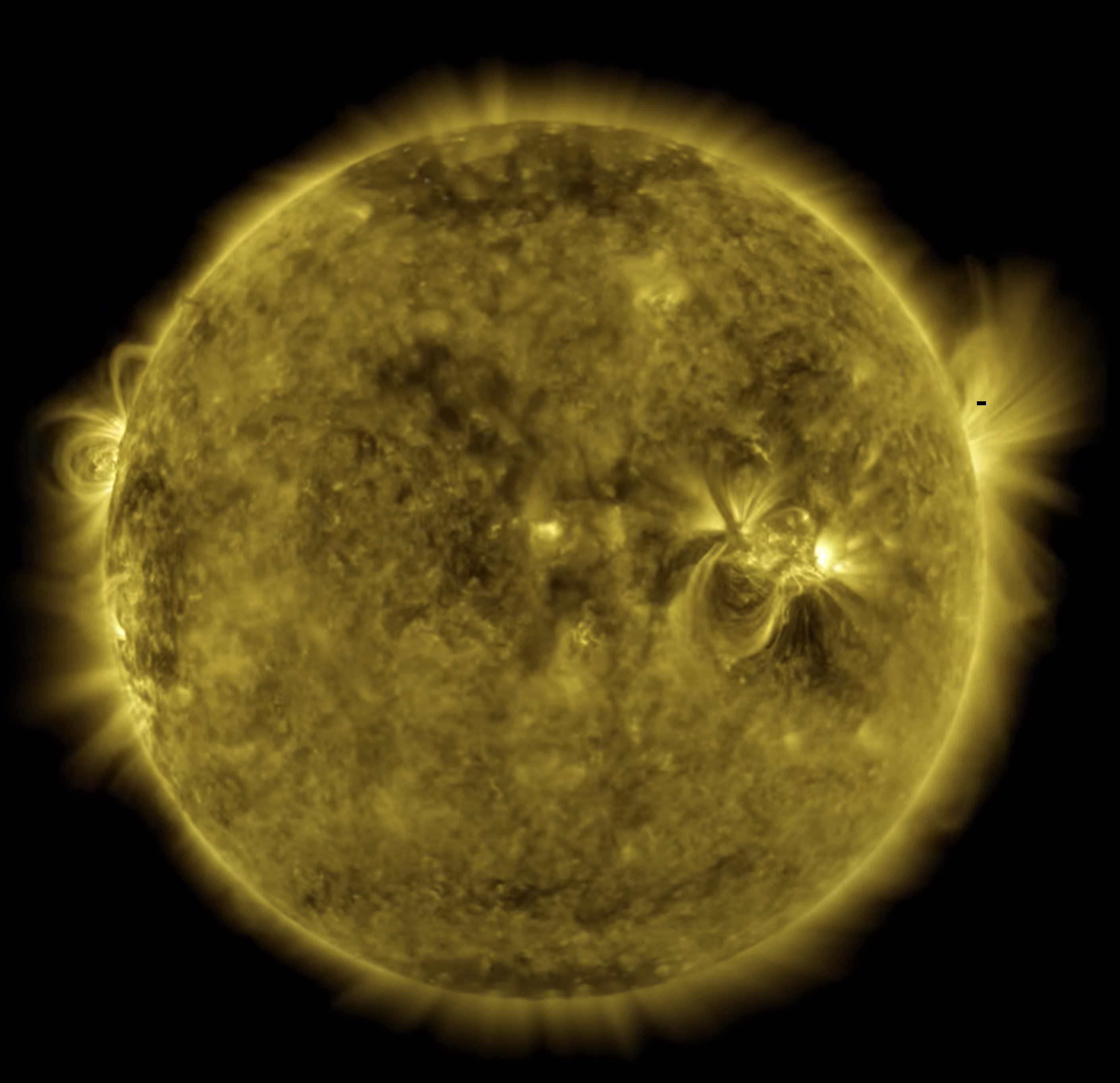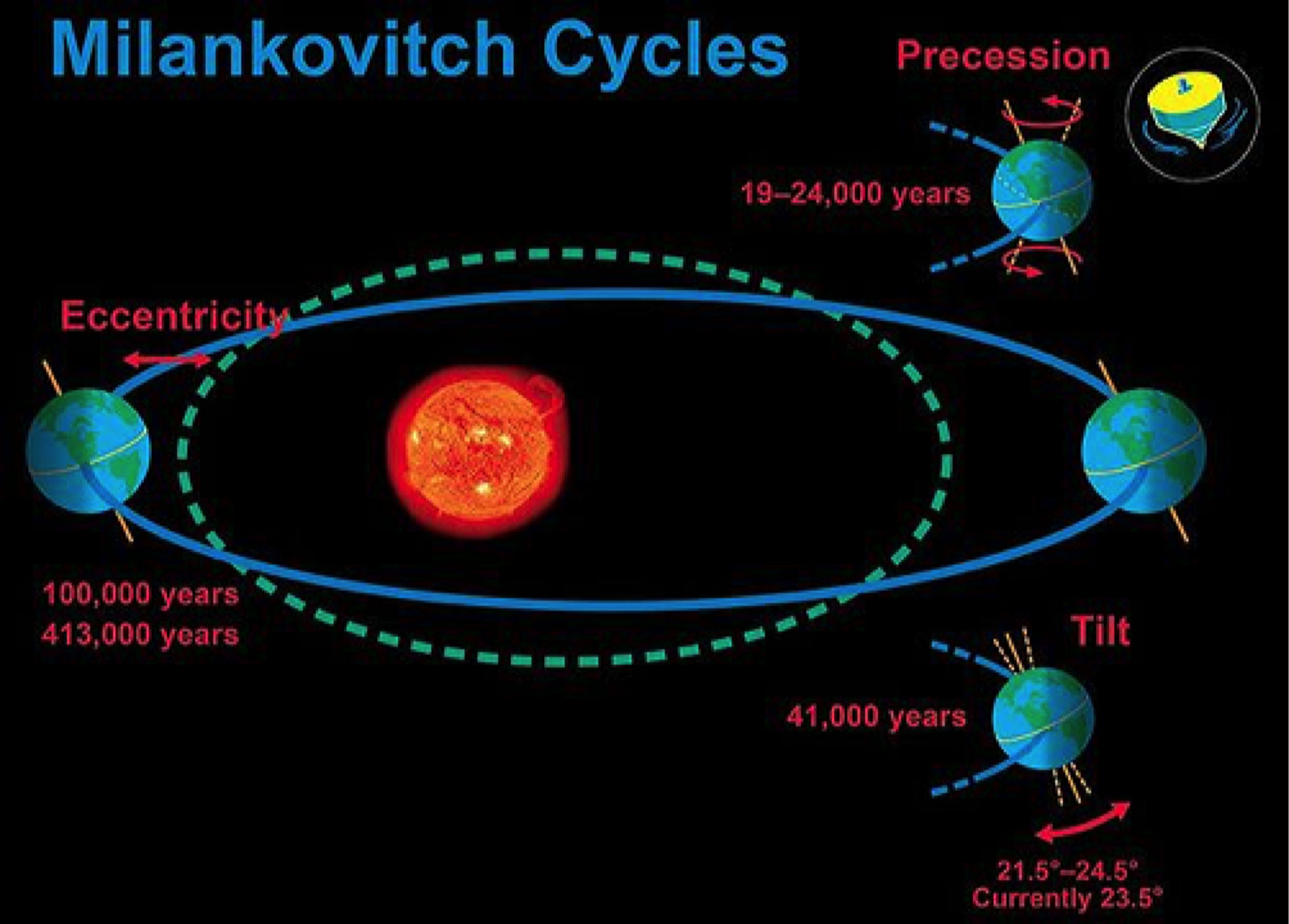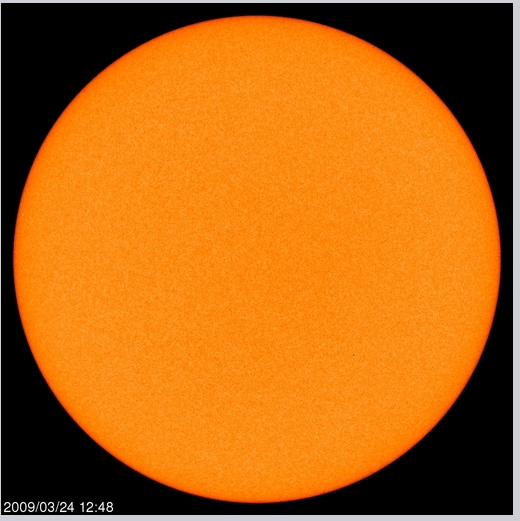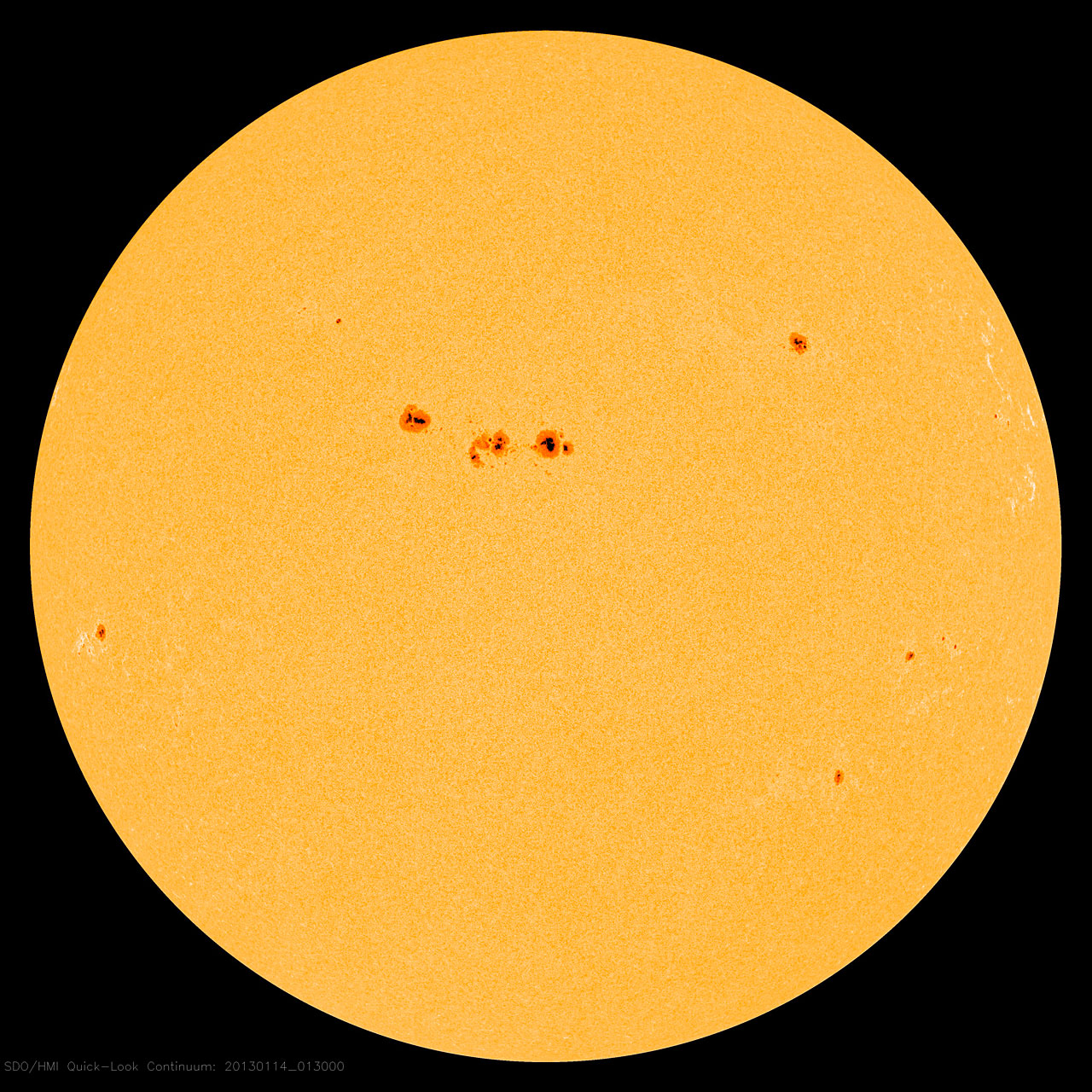Latest Sun Status and Related Information
Context:
Sun spots have been reliably counted and recorded since the early 1600s.
There have been many linkages to little ice ages and general temperature
trends, but they have not been used in climate change modelling science
because the mechanism through which sunspot activity affects the Earth's
temperature is unknown, despite the high correlation.

Sunspots are areas of intense magnetic storms that actually cool the sun's surface. However, science is closing in on the mechanism underlying the relationship between sunspots and our climate.
See for example the work of Drs. Kees DeJager and Silvia Duhau on the characteristics of the Solar Dynamo, directly available as published papers on Professor DeJager's website.
A description of sunspots is at the bottom of this page. But first, if you think the sun has a constant output, like a light bulb, please watch this NASA video that captures the sun over the last 10 years, condensed to one hour of amazing motion. See NASA’s Solar Dynamics Observatory
Sunspots may disappear completely, per NASA, as in this left image. Click the left photo for today's image to compare with a clean sun from 24 March 2009 and one with sunspots from 14 January, 2013.
(Source of Left Imagery: ESA and NASA Cooperative Solar and Heliospheric Observatory and Right: NASA's Solar Dynamics Observatory)
Analysis: The two major
recorded mini ice-ages, the Maunder and the Dalton Minimums began at sunspot
minimums comparable to the present. Among the climate skeptics, this has
been discussed for years. As the sun remains unusally quiet, perhaps the
world will better recognize that the threat from cooling is far more ominous
and urgent. This
author believes that sunspots must not be ignored simply because they
do not fit into a CO2-based model. The continued low level is now at that not seen since the early 1900s. We may soon know whether CO2 or the sun is most influential in determining our future temperatures. If it becomes clear enough to discern, the news is not likely to be good for humans and other inhabitants of this planet.
It is increasingly evident that we are on the cusp of both the next major glaciation (as in 1 mile thick ice in Chicago and NYC) caused by the orbital eccentricity and the tilt of the Earth’s axis (See Milankovitch cycles below) and the next mini ice age (see Maunder, and Dalton, or Rohrer minimum related to the location and number of sunspots (below)). The above photo of today’s sunspots (usually none) continues a virtual void that has lasted too many years. It is a reliable indicator of something more than the usual 11-year cycle Solar Minimum. In 2009, NASA sunspot Scientist David Hathaway said "This is the quietest sun we've seen in almost a century”. But it has continued. I think it increasingly likely we are at the threshold of a Maunder minimum (a 2 deg F drop in temps that causes global crop failures). See the Amsterdam painting (to the right) during the 1645-1715 Maunder minimum (Source: Rijks Museum).
It is more troubling that we are likely near the end of the latest (of 30-50) warm phase (the Holocene) of the 4th Ice Age of the Earth, the Quatenary, which began 2.58 million years ago. The geological record points towards the normal expiration of the Holocene. If true, per our IPCC Polar climate briefers for the Polar Chapter all that is needed to revert to the normal ice age of the Quatenary is a trigger that causes 2 or so cold years in the N Hemisphere. For example a conbination La Niña and North Atlantic Oscillation cold phase and/or the big planets lining up mostly behind us, pulling us from the sun. This conbination leaves reflective snow on the ground increasingly during summer and by the 3rd year it stays year-round - for the next 100,000 years. When it breaks, it leaves behind glacial moraines all the way to the mountains of Costa Rica and Panama. In some periods when all should have been favorable for a deep ice age nothing happened - therefor the idea that a trigger is needed. This is also true for the end of a cold period. For the last 5 cycles, the triggers have not failed. Our briefers thought that the literature that shows that the exiting of an ice age is sudden and going in is gradual is incorrect. They believed it to be sudden each way - as in 1-3 years. As co-chair of IPCC Polar Regions, we knew of this risk 25 years ago, but the policy folks thought it did not contribute to the anthropogenic CO2 message and asked that we exclude it from our Chapter.
The right graphic shows the geological time periods. This timeline below was prepared by Robert A. Rohde based on published data. Note that today’s temperature, and perhaps its duration if it ends soon, matches 3 of the 4 prior brief warm periods (temp and duration) in this 100,000 year cycle. In my part of the IPCC (Polar, Oceans, Coastal Zones, Fisheries), we had the American modelers brief us on their vi ews of likely changes affecting my Chapters. Then we had the Russian Paleo-Ecologist Academicians do the same - and we addressed all the possibilities. The Russians had no empathy for the modelers, and vice versa.
ews of likely changes affecting my Chapters. Then we had the Russian Paleo-Ecologist Academicians do the same - and we addressed all the possibilities. The Russians had no empathy for the modelers, and vice versa.
An excellent review (click) is here of the three components of Milankovich Theory (Earth's Orbital Eccentricity, Axis Tilt, and Axial Wobble (Precession). The figure is from Universe Today. On a positive note, in recent years, all the planets are dispersed on the other side of the sun from us, collectively pulling us towards the sun, but our orbit at this phase of the cycle is nearly circular, so it is unlikely to have contributed to recent warming. Since all the planets are moving in the same direction but at different speeds determined by their distance from the Sun, discernible differences take hundreds of years. Today's status is viewable. Eccentricity caused by the planet locations is on a 100,000 year cycle. Also, the axis tilt seems favorable for not entering a deeply cold phase. Nevertheless, the geological record with 100,000 year cycles is remarkably consistent and shows we are due for an ice age. To my Russian Academician colleagues, this has been far more important than any CO2 contribution. I find them convinced and credible. Note that the shift from the 41,000 year axis-tilt cycle shifted to a 100,000 year eccentricity basis cycle 1 million years ago has not been explained.
The Earth’s history tells us that even if we put back all the CO2 in the air that the plants have removed and saved as coal, peat and perhaps some as oil, we cannot overcome these natural events. So much CO2 has been removed that at the present concentration of 0.0004, we can double it 11 times before it does not round to Zero. It is presently increasing half of a percent/year. For me, being engineering trained in chemistry and physics and quantitative methods and with nearly 50 years working on the science of Climate Change (both cooling and warming), including nearly 30 as a Board Member of the NOAA Program in Climate Change and 14 with IPCC leadership roles, I seriously doubt there is enough CO2 or any other trace gas to really matt er significantly.
er significantly.
I am concerned that this empirical, observation-based science that aligns with cooling is not being addressed. I believe we should be hedging our bets by researching cold weather crops, fish, livestock, and infrastructure. From where I sit, with a foot in the NOAA/EPA/IPCC CO2 modeling camp and the other foot with those colleagues who are using observations of natural cycles, and who are cooling-oriented that I met first in the 1970s, and now their progeny, I sense a movement of scientists to the latter. It is not just the Russian/Soviet Academicians any more. I do not believe it is just the present US Administration driving this but includes scientists who have left, or been rejected by, the "consensus" and who are increasingly reaching out, building a consensus of their own.
What is a Sunspot? A sunspot is a region on the Sun's surface (photosphere) that is marked by intense magnetic activity, which inhibits convection, forming areas of reduced surface temperature. They can be visible from Earth without the aid of a telescope. Although, they are at temperatures of roughly 4,000–4,500 K, the contrast with the surrounding material at about 5,800 K leaves them clearly visible as dark spots, as the intensity of a heated black body (closely approximated by the photosphere) is a function of T (temperature) to the fourth power. If a sunspot were isolated from the surrounding photosphere it would be brighter than an electric arc. Sunspots, being the manifestation of intense magnetic activity, host secondary phenomena such as coronal loops and reconnection events. Most solar flares and coronal mass ejections originate in magnetically active regions around visible sunspot groupings. Similar phenomena indirectly observed on stars are commonly called starspots and both light and dark spots have been measured. From Wikipedia (http://en.wikipedia.org/wiki/Sunspot), For those interested in a review of sun spot recording history, I suggest a paper by F. R. Stephenson and the Recording of sunspots and Galileo's involvement with his telescope.
Opportunities to collaborate on our programs or through tax-deductible donations are available at the Everett-Vehrs Conservation and Research Foundation.

